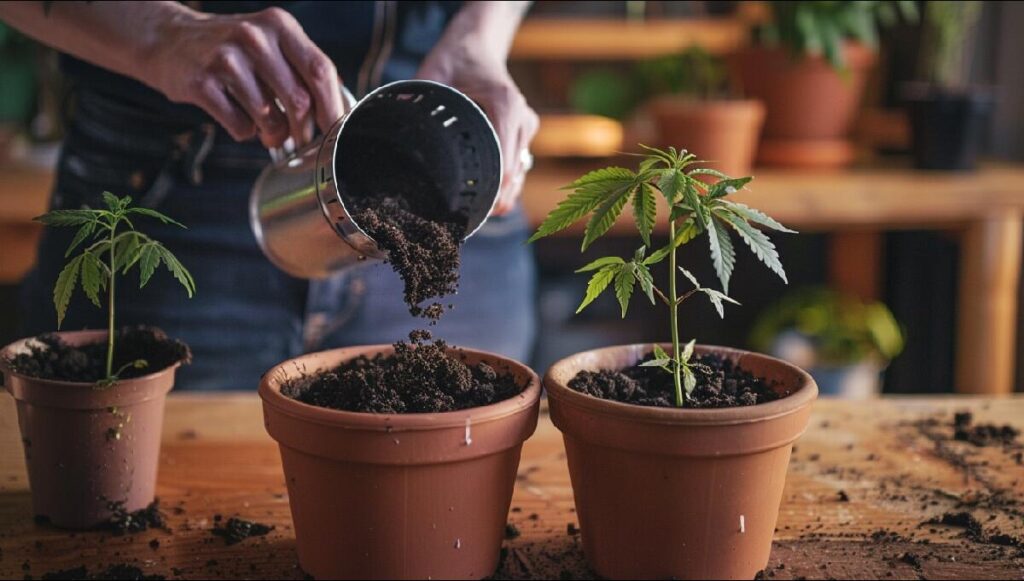Introduction
Transplanting cannabis is widely regarded as vital for the health of the plant together with the healthy growth of the plant. It has already been mentioned that anyone is a grower – a rookie or a professional – needs to learn and hopefully fully comprehend under what conditions and when, exactly, such a transplant should take place and how it affects the plant. In the next chapters you will read general information and, additionally, separate sections dedicated to explaining how, why and when to transplant cannabis, how to support your plants in case they get stressed after transplanting, and help your plants grow as actively as possible.
What is Cannabis Transplanting?
Understanding the Basics
Transplanting of cannabis is a process by which cannabis plant is moved from one growing pot to another, and usually a larger one, whose purpose is to give space to the roots of the plant apart from providing it with nutrients. This is most likely to occur at one or another stage of development of the plant, for instance, when the seedling are transplanted to pots of a larger size or when fully grown plants are transplanted to the soil or to another pot for the final potting before flowering. Transplanting aids in enhancement of root growth since root development is not contained and hence helps plant growth.

Common Misconceptions
There are opinions of some growers that the transplants should be more, on the other hand, it should be done barely to avoid stressing the plant. However, the timed transplantation makes a powerful differently to the growth of plants. Another very common misperception is that cannabis plants should be transpladed when they get too”root-bound”. In fact, decision has to be made depending upon the over all condition of the plant, the extent of root growth and its growth phase not pot size.
Why is Transplanting Important for Cannabis Plants?
Benefits of Transplanting
Transplanting therefore has many benefits to the growth of cannabis plants Some of the benefits of transplanting include the following. It stimulates root branching, and therefore enhances the capacity of the plant to absorb water and nutrients; this results in to thick stems and enhanced growth. Transplanting also helps in preventing root constrained situation where at one time the roots start make circles round the pot hence limiting the nutrients thus a poor growing session. In case you offer a large space to the cannabis plant you are offering the plant the right environment to grow to its full potential.
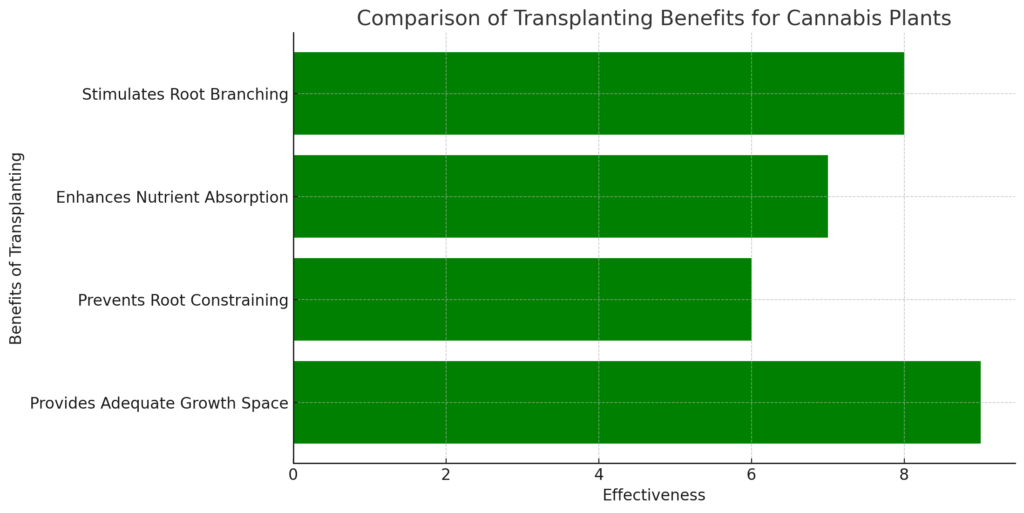
Risks of Not Transplanting
The failure to transplant at the right time may result in; Some roots can be fixed in their containers and develop nutrient deficiencies, slow growing, and even die. Second, a plant you attempted to grow in a pot that its roots are cotyledons constrained and are seeking for more space is more prone to disease or pests attack than a healthy plant. Flow of the capital can be another possibility if it fails to be transplanted, this means that there are factors that a firm can bring that may culminate to cut back the performance of the plant rather than adding to it.
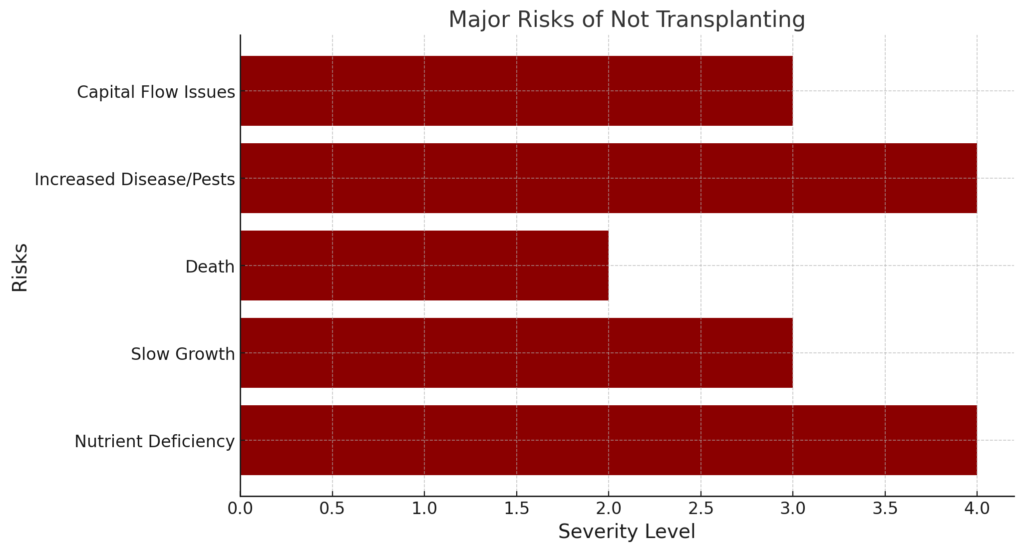
Best Practices and Timing Tips for Successful Cannabis Transplantation
Signs It’s Time to Transplant
Transplanting: the process of when it is okay to move plant, the following are the signals that show that should transplant.
To determine when it’s time to transplant, look for these key indicators: these could be because; all the roots are spiralling around the base of the pot or potted plant, the plant is top-heavy and is easily knocked over, or it is naturally growing slower. This and many other such signs show that either the root mass exceeds the size of the pot or the container in which it is placed.
Factors Influencing Transplant Timing
Environmental changes are also labeled on the periods of transplantation together with the seasons. Transplanting should be done when the plant is small and during the vegetative stage because the plant has the ability to bounce back in the shortest notice. Outdoor growers should re-plant their seedlings when the whether is right, that is during warm and the growing days are getting longer; this is during early spring. This is especially so where plants are grown in a controlled environment such as in a greenhouse; the change in environment has to be managed to correspond to the right time for transplant.
Best Time of Day to Transplant
Transplanting has to be in the early morning or in the later part of the afternoon due to the reason that heat stress on the plant is low. Avoid transplanting during mid of the day particularly in hot region as this will stress the plant due to what is referred to as transplant shock.
Comprehensive Guide to Preparing and Transplanting Cannabis
Choosing the Best Growing Medium for Cannabis Transplant
The Relative Impacts of the criteria used in selecting the Most Suited growing medium for cannabis transplant
Soil vs. Coco Coir: Pros and Cons
of course, there are various types of growing media that can be in use for the cannabis plant and, again as always, there are also pros and cons of each. Some crop producers therefore prefer soils because of nutrients and easiness of usage as compared to the others. But it can also retain a lot of it, which if it is not drained may cause root rot to begin with. Coco coir however requires frequent watering and aeration but it has no natural nutrient content then it has to be often supplied with nutrients.
These are the two common materials that are used in the filtration process
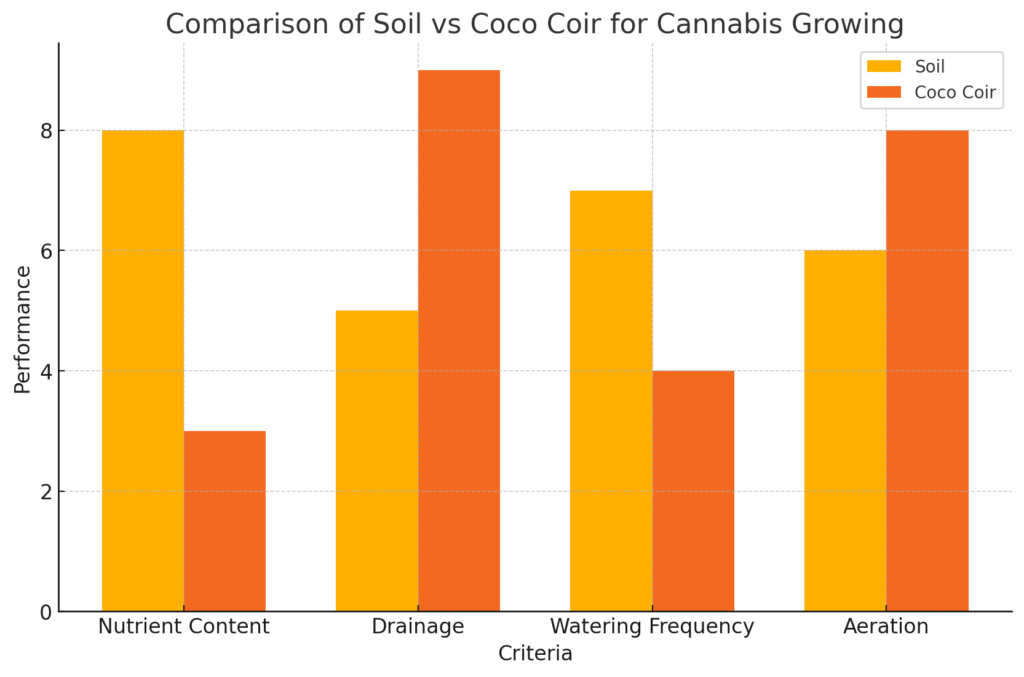
When to Use Perlite and Rockwool
It is used for soil conditioning where the ordinary soil or the coco coir is mixed with perlite to reduce the compacting effect of the soil and also to improve drainage, which is very good for the production of cannabis. Rockwool is also another type of growing medium that is quite suitable for growing enthusiasts that appreciate high root aeration area and is suitable for indoor growing. However as mentioned above Rockwool’s pH has to be lowered before it can be used and it is very slightly hygroscopic.
Adjusting Medium for Different Growth Stages
Because of these growth stages, you may need to alter the growing medium since the cannabis plant grows from one stage to another. A more watered down blend, which contains more perlite must be applied at the seedling stage so that root will be produced. Extension of the growing time is possible by growing the plant under controlled conditions of lighting, temperature and humidity, likewise, a richer potting mix will have the effect of supplying more nutrients hence meeting the higher nutrient demands by the plants at a later date.

Preparing for Environmental Stress During Transplant
Light Intensity Management
Appropriate light intensity is something that has to be controlled, in particular when it comes to transplanting the plants and even after this is over. One should use time to acclimatise plants because their light energy intensity should be lowered after transplanting. This can be achieved by having the lights on for a few seconds during the shooting or in the cases that shooting will be done outside through using shade cloth.

Temperature and Humidity Control
This is supplement with proper temperature and humidity to reduce stress during transplanting. Gurab opines that temperature should be 70-80°F (21-27°C) and relative humidity at 50-70% in the first 72HS of transplantation. This will enable the plant to blend in the new environment and thus the technique is effective in avoiding the plant to shock.

Tech Solutions for Environmental Control
These requirements may reduce the probability of transplant shock if the cannabis is being produced professionally or in a controlled environment and equipment for setting the temperature, and the correct humidity and light are purchased. Such systems allow particular control of conditions in the environment so that your plants do not feel stress during transplanting.
Step-by-Step Cannabis Transplant Guide
Safely Removing the Plant
First, it is suggested for one to gently swirl their fingers around the rims of the pot gently. Using your left hand turn the pot upside down carefully; with your other hand grab the base of the plant, so that the plant detaches easily. If the roots are, bound you should spend some time to try and possibly work them loose so that the plant can be able to grow shoots in the new pot.
- Pro Tip: Super-elite growers may of course cut all most all the longer roots in order to develop better lateral roots. This should however be done cautiously to enabled an even spreading of the stress which should not be focused on the plant.
- Beginner Tip:Regarding the root ball it is important to be very careful lest one causes harm to the roots of the plant. There are occasions that the roots are compacted in mass, if so it is preferable to run your fingers through the soil with a lot of force so that the roots are not injured while at the same time creating space for air.
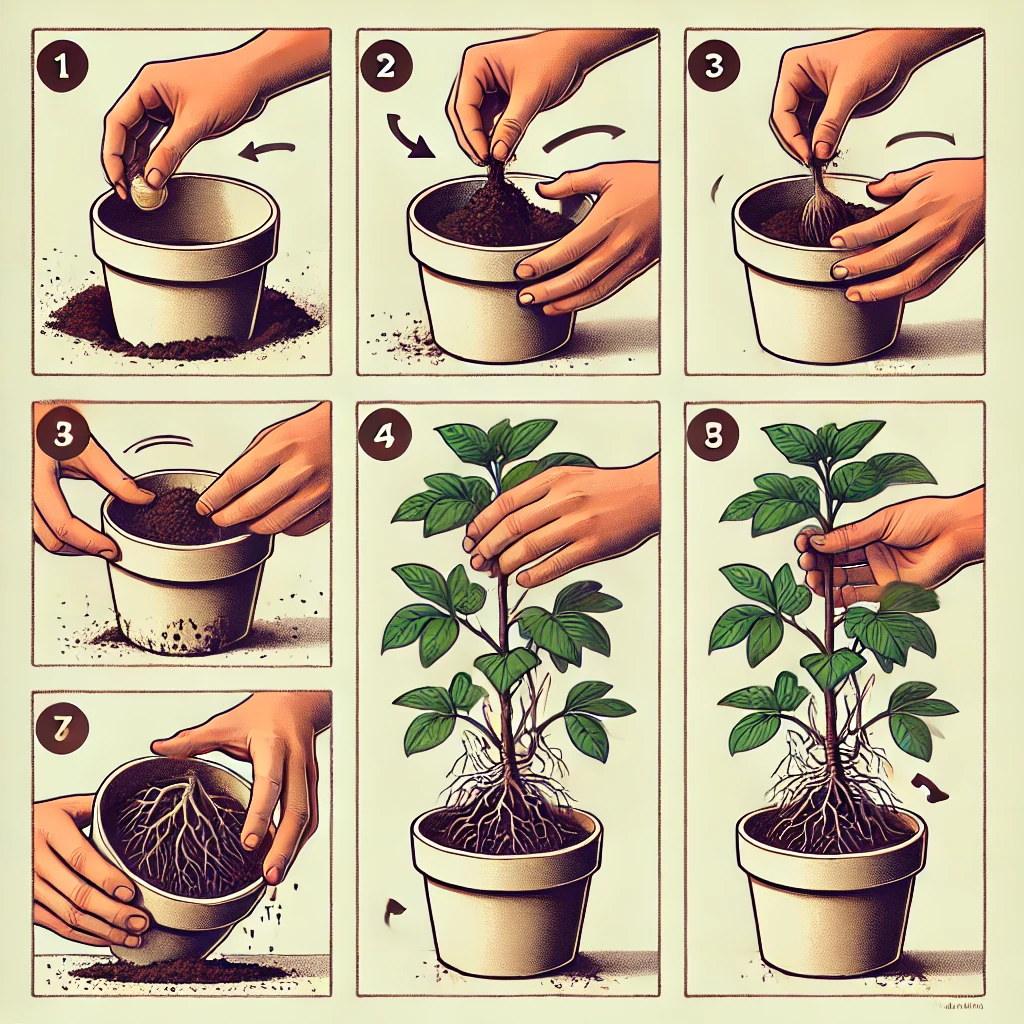
Properly Placing the Plant in the New Container
When re-potting, then there is always the proper method of positioning the plant on the new container.
Position the plant right in the center of the new container and pay much attention on how deep the root ball is situated. He ought to pour new growing medium over the foliage and stems part of the plant and gently press the growing medium to minimize on the quantity of air that may be trapped therein. It is advisable to water the plant after transplanting, in order to let the soil to surround the roots and to reduce transplant stress.
Post-Transplant Care Tips
Enhancing Root Health with Mycorrhizal Fungi
This pathway of interaction was implied mutually between mycorrhizal fungi and the roots of the plants and also aid in the absorption of nutrients and protection of the plant. Incorporating mycorrhizas fungi the kind at the transplants aids in increasing surface area of root thus enhances it hold of new container.
Managing Environmental Stress
Indeed, after the transplant the recipient should regulate temperature, humidity and exposure to levels of light. Sudden change of light intensity should be discouraged because this stresses the plant by exposing it to light intensity it cannot efficiently use (He & Zhang, 2008).
Optimal Nutrient Supply After Transplanting
After transplanting process it is suggested that the plants should be fertilized by a nutrition solution that should be balanced. Publishes more often on fertilizers for the reason that phosphorus is used by the roots of plants. This is the time when one needs to be very careful with this nitrogen since it can actually stress up the plant.
Monitoring Plant Health Post-Transplant
And if there are signs of extremity stress, which can be shown in plant wilting, leaves turning yellow or even slower growth. When needed modify the factors within the environment or the nutrient delivery systems that are prevailing. Some subcategories, which need constant surveillance, should be monitored to ensure that problems are easily identified early enough for an organization to effect a clean sweep from the transplant.
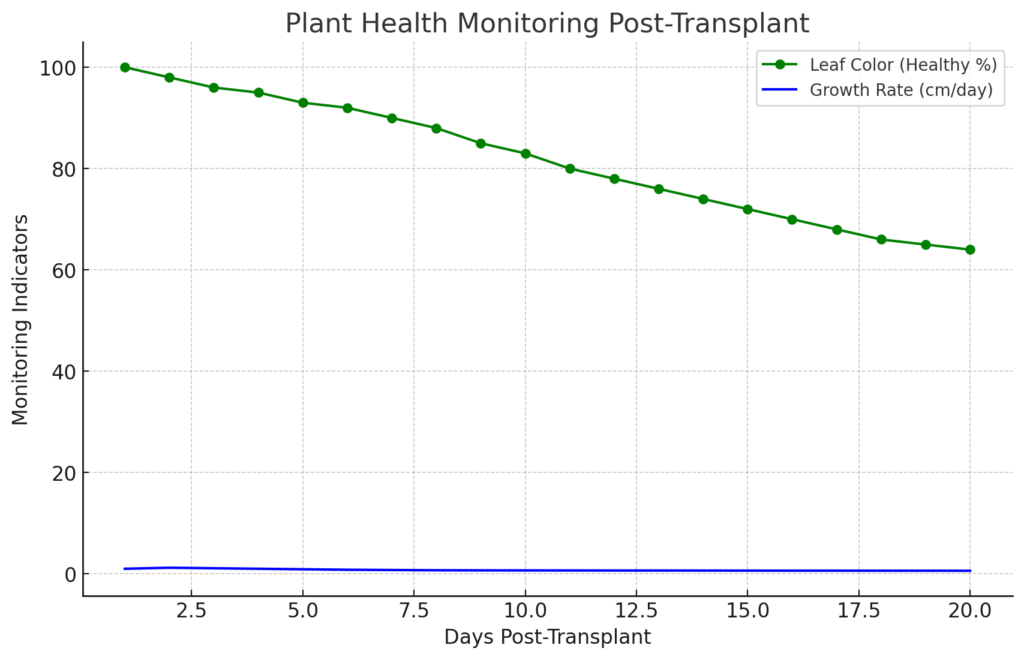
How to Prevent and Manage Transplant Shock in Cannabis Plants
Transplantation of plants is also another issue that onocs transplant shock which will either slow down the growth of the plant or even kill it. To prevent this, transplants should only be made when conditions are good and the roots should only be disturbed to the extent necessary. If transplant shock occurs the plant should be put in a low light area and be watered frequently so that it can regain its health. It is proposed to add, for example, a stress-reducing preparation such as kelp extract to enhance the stress of the plant.
Legal Considerations and Compliance in Cannabis Transplanting
Understanding Local Regulations
In this way, all the laws that are regulating the growing of cannabis are all unique for the geographical region that one is in. It is also important while or before choosing the type of plant to grow also to consider the laws in ones country or state about the number of plants one can grow, where to grow the plants and the required license to obtain. Where you fail at it, you attract legal issues; check your legal status.
Transplanting: Legal Consultation DetourConsulting Legal Experts Before Transplanting
Get it from the legal advisors all legalities concerning large scale production and commercial production before one can engage in the same. Legal advice is essential if you are considering starting the business by taking it out into the market place or if the business is to be set up in different states.

